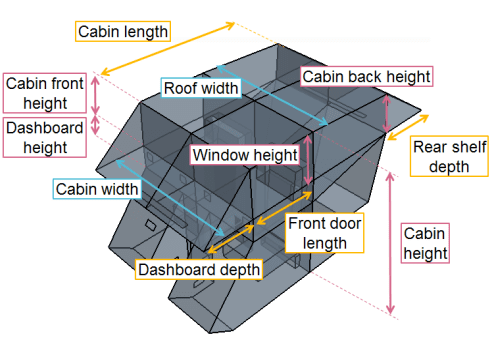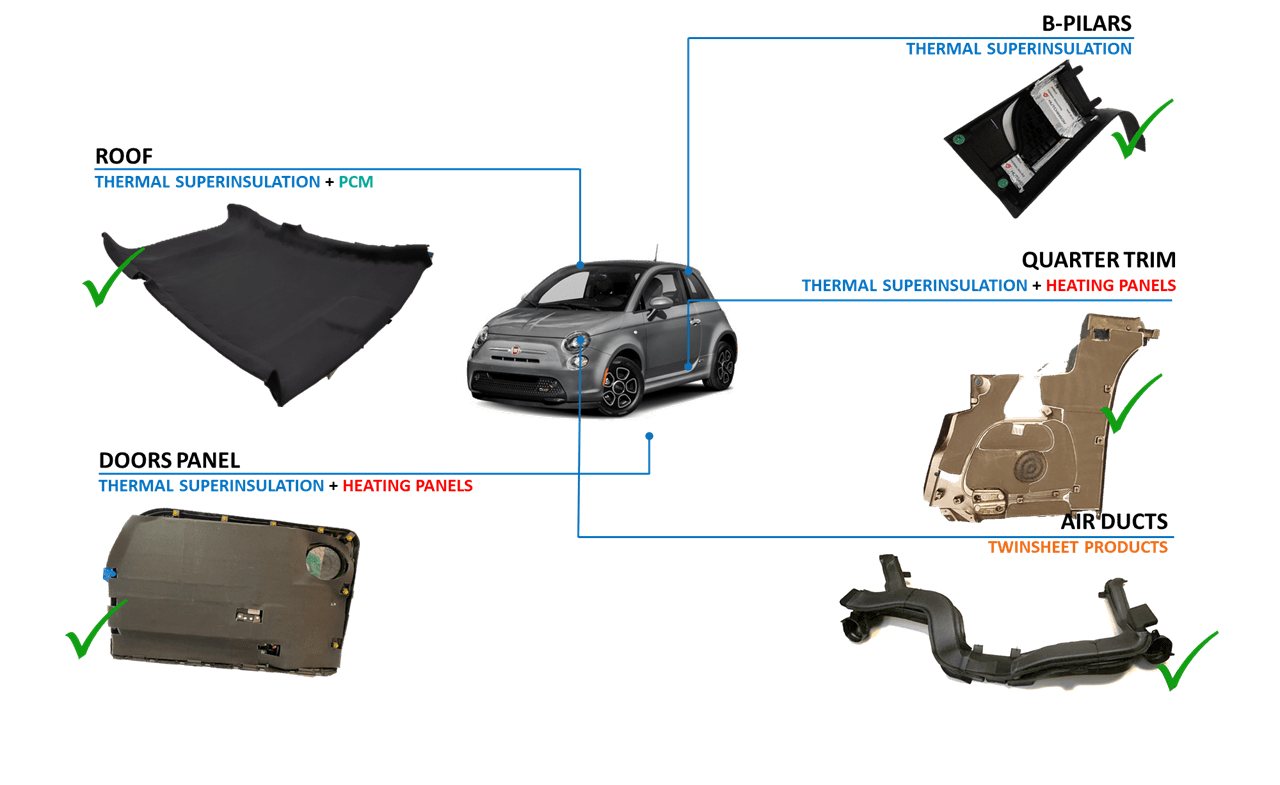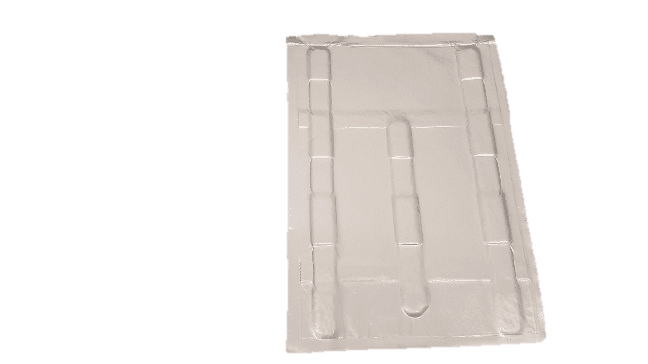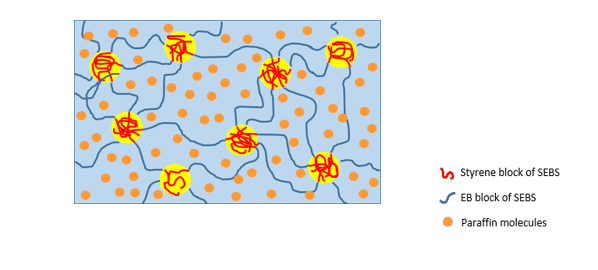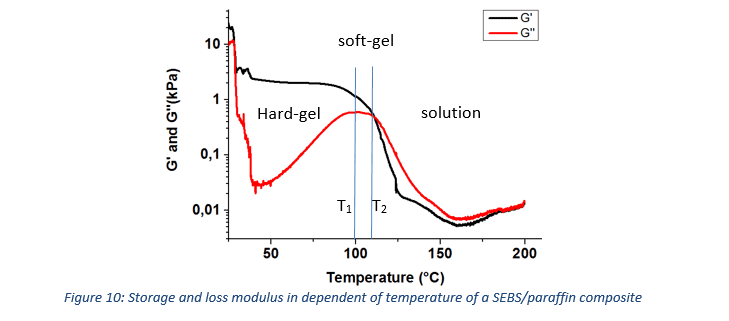Insulating Body Panels
Intermediate result from partners CRF, HUTCH and FhG.
Result has been achieved on 16 January, 2020 in month 27 of the project.
Short introduction
Within the scope of cabin comfort and energy efficiency improvements for Electrical Vehicle (EV) in DOMUS project, this short document aims to highlight the work done on the development of:
- 0/1D cabin model to assess the thermal impacts of innovative solutions in the car cabin
- Vehicle cabin body physical parts that include innovative materials able to reduce thermal losses or to store energy.
Objective
Car cabin thermal conditioning either in hot or cold environmental conditions requires energy from the battery. Thus, the total power consumption used to reach and maintain the optimal thermal comfort of EV impacts the overall vehicle range. Thermally relevant subsystems which integrate novel materials/products in the car body and able to limit or constrain thermal flows are under assessment in the DOMUS project. The main objectives related to the study are:
- the development of a 0/1D cabin model of the addressed DOMUS demonstrator vehicle (Fiat500e). The baseline model is correlated with physical testing in climatic chamber and will help to size, optimize and demonstrate the benefit of novel thermal subsystems integrated in the vehicle body.
- the development and the optimization of superinsulating product (Vacuum Insulating Panel i.e VIP) and Phase Change Material (PCM) compatible with automotive requirements and specifications.
- the integration of such materials/products into a modified car demonstrator (Fiat 500e) in order to measure the impact on thermal comfort and energy consumption.
Research
The improvements of occupant’s well-being sensation and cabin thermal insulation via novel body parts integration in the vehicle are the two main aspects investigated to save energy required for comfort. To address these objectives, it has been researched to combine the two following materials:
*Superinsulating materials that are premium candidates for mobility application because of limiting the heat transfer through the shell without impacting too much the occupied volume. They are indeed more insulating than still air or conventional insulation materials (such as glasswool, polyurethane foam, rockwool…) as shown in Figure 1.
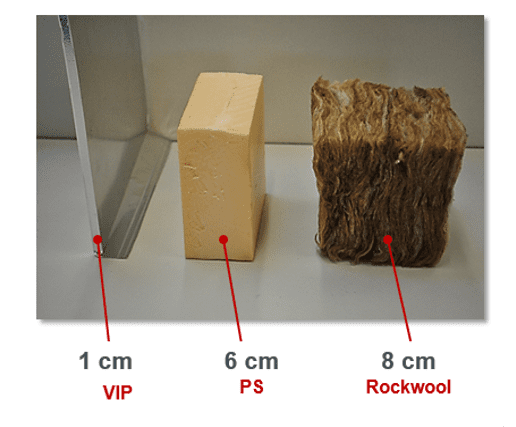
Figure 1: insulating material thickness for a given thermal insulation performance (thermal resistance R=2m².W/K)
*PCMs that are able to store and release thermal energy during the process of melting & freezing. When such a material freezes, it releases large amounts of energy in the form of latent heat of fusion, or energy of crystallization, and when it is melted, an equal amount of energy is absorbed from the immediate environment as it changes from solid to liquid.
How has this been done?
The work performed has been done according to the following steps:
1.Body panels retro-engineering in order to understand the current baseline properties (thermal and dimensional). Data are mandatory inputs for step 2.
2. 0/1D model building of the Fiat 500e correlated with real tests performed in climatic chamber either in cold (-10°C) and hot (+35°C) ambient conditions. The 0/1D model integrates an embedded 3D (Figure 2) model of the cabin and material properties given by step 1.
Figure 2: embedded cabin CFD model with characteritic cabin dimensions on Amesim software
3. Modified 0/1D model building. It considers the implementation of innovative solutions that integrates VIP & PCM. Sensitive analysis according to component variables (thickness, thermal conductivity…) to target the most efficient and reliable solution.
4. In parallel of step 2-4, the development, the optimization and the validation of the two main body panel components:
– Superinsulating materials (porous material combined with vacuum) with low thermal conductivity, appropriated flexibility and mechanical properties to fulfill automotive requirements.
– Phase Change Material based compound with high energy capacity, suitable mechanical property and which do not show leakage during phase changes (melting & freezing).
5. Body panels manufacturing and delivery. The integration will mainly be done in the following areas: roof, doors, quarter trim and B-pillars (Figure 2).
Figure 3: demonstrator areas here body panels will be integrated
6. Demonstrator integration, testing and validation: this work is related to WP5 in the DOMUS project.
What was the result?
0/1D Model on SimCenter Amesim
Considering baseline materials characterizations, a 0/1D Amesim model was correlated with experimental data (mainly temperatures) given at the vehicle level and at different ambient conditions (-10°C and +35°C). This model considers the following assumptions:
- External temperature depending on correlation configuration (@-10°C / @+35°C)
- External pressure = 1,013 bar
- No solar flux
- Idle phase
- Air vents temperature taken from experimental dataset (global mass flow = 300 m3/h)
The correlation between the theoretical and the experimental temperatures was done in several zones of the vehicle: doors, floor, roof skin temperatures but also in the vehicle air volume (drivers, passenger head and foot…). Differences between temperatures coming from the climatic chamber tests [EXP] and the model [SIMU] are less than 1°C as partially shown in Figure 4.
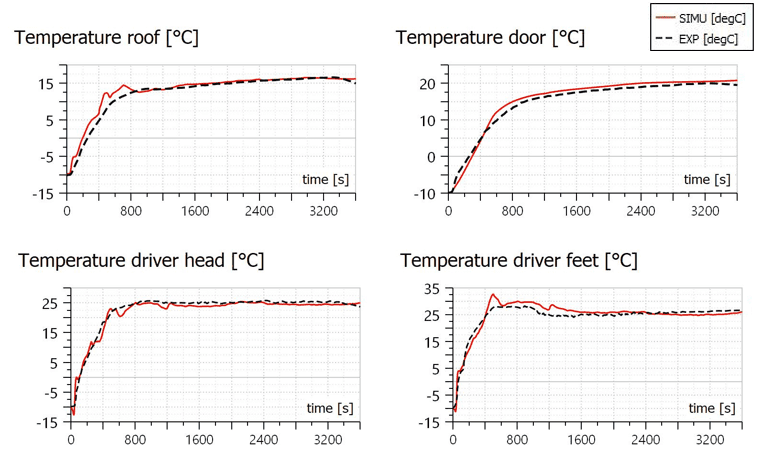 Figure 4: temperatures differences between Amesim model [SIMU] and experimental results [EXP]
Figure 4: temperatures differences between Amesim model [SIMU] and experimental results [EXP]
Since the model gives results closed to the experimental, a sensitive analysis on the roof and the doors that includes innovative materials (PCM and VIP) could be performed. It considers the following material properties:

Table 1: PCM and VIP properties used for the sensitive analysis
It is assumed that the PCM materials are in a melted state before the start-up of the vehicle. The assessment includes several configurations. Results for one of them (eVIP = 4mm, ePCM = 6mm and roof that includes the innovative thermal system) lead to the following conclusions:
In hot conditions (+35°):
- A negative impact (up to +5°C) of the system in the transient phase (due to T_melt) on skin and air volume temperatures (Figure 5)
- An energy saving in stabilized phase (up to about 40%)
- PCM impact strongly dependent on the T_melt
Figure 5: temperatures differences between baseline and modified configurations at the skin roof and head levels (T_ext = +35°C)
In cold conditions (-10°C):
- A faster cabin warm-up (dT_wall up to 20°C and dT_air up to 3°C) mainly in transient phases (Figure 6)
- An energy saving in stabilized phase (up to 40%)
- PCM utility after short parking phases
- PCM impact strongly dependent on the T_melt
Figure 6: temperatures differences between baseline and modified configurations at the skin roof and head levels (T_ext = -10°C)
Innovative materials development
*Superinsulating product: work based on material and process optimizations lead to efficient VIP that exhibit excellent thermal insulation properties. A porous material dried in advance is packed under vacuum in a tight film. The final product could potentially be subjected to a thermoforming process in order to shape the VIP (Figure 7). This process able the product to fit the final shape.
Figure 7: 2,5D VIP
Assessment on different core materials and films able to design a viable, reliable and efficient product.
Properties are given in the following table:
 *PCM:
*PCM:
The objective of the recent research is the development of a heat storing material in automotive interior aiming on saving energy for heating and air conditioning. The approach is the usage of phase change materials (PCM), which can take up and release a significant amount of heat during melting and crystallization. For the desired melting/crystallization temperature range, paraffins were figured out as material class with the highest melt/crystallization enthalpy. In this application, the leakage of PCM, particularly in liquid state is a big issue and has to be avoided. This can be achieved either by encapsulation or form stabilization, which is the major objective in this task. In our research, we favoured the form stabilization with a styrene-block-ethylene/butylene-block-styrene (SEBS) tri block copolymer, which can store up to 90 % paraffin as PCM.
Figure 8: Schematic illustration of SEBS / paraffin composite
The SEBS is typically used as thermoplastic elastomer (TPE). Herein, the soft EB blocks are responsible for the elastomeric behaviour and the phase separated polystyrene domains act as reversible, physical cross-links. Since the EB phase has a higher solubility in paraffin than the polystyrene, the paraffin is located preferentially in the E/B phase, which results in a highly swollen network (Figure 8). The chemical structure of SEBS is shown in Figure 9. It is characterized by the three structural parameters of molecular weight, styrene content and ethylene/butylene ratio.
Figure 9: Chemical structure of SEBS
In this work, the thermo-mechanical properties and leakage behaviour of different combinations of SEBS with para
ffin were investigated as a function of the structural parameters. Prepared samples were tested in a parallel plate rheometer.
Figure 10: Storage and loss modulus in dependent of temperature of a SEBS/paraffin composite
Storage modulus G’ and loss modulus G’’ describe several transition temperatures for each composite. For the example shown in Figure 3, T1 (hard- to soft-gel transition temperature) and T2 (soft-gel to liquid transition temperature) are at 100 °C and 111°C respectively. In this work, we could demonstrate that a change of molecular weight and/or styrene content, the transition temperatures could be affected. A significant influence of E/B ratio on the thermo-mechanical properties could not be proofed. Similar dependencies have been identified concerning the retention behaviour. However, the leakage of paraffin from the blend into the gas phase at elevated temperatures cannot be avoided completely. Therefore, further improvements are under progress. This work contributes to improve the heat enthalpy while maintaining good mechanical properties and ensuring simple and cost-effective PCM manufacturing.
What will the results be used for?
These results will be used in the framework of WP6. The insulating body will be implemented in the Fiat 500e demonstrator (roof, doors, quarter-trim and B-pillars). It is expected that the instrumentation of the car cabin will lead to the following conclusions. Insulating bodies will:
- Decrease the heat losses through the car shell and thus limit the electrical power needed for cabin comfort
- Indirectly, improve considerably the vehicle range
- Improve the thermal comfort in winter since the set temperature will be reached faster in the modified vehicle than in the baseline.
All the data will be beneficial for the fitting of the simulation’s model
What is the impact?
The development of body insulating panels aims to show how thermal relevant subsystems based on innovative materials could answer to energy efficiency and thermal comfort concerns. It ables also to highlight the significance of superinsulating materials that make possible to improve vehicle thermal management with restricted added volume.
This new component will be tested in the WP6 for a complete qualification and validation. The ultimate goal of a such assessment is to prove the interest of the system at the vehicle level: it should improve the vehicle range and thermal comfort sensation for the passenger. Such innovations should eventually make easier the EV acceptance by the final customer.
Main results and achievements will be disseminated in WP7: Dissemination, communication and preparative exploitation activities.


